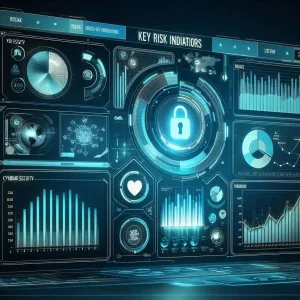As internal auditors play a critical role in driving business value and mitigating risk, staying updated with industry developments is essential. One key milestone in an auditor’s career is obtaining the Risk Management Assurance (RMA) designation. This certification not only enhances skills but also positions auditors as strategic partners within their organizations. In this blog, we will explore the significance of the RMA designation (for example, Credit Risk Certification) and its transformative impact on internal audit functions [1].
Importance of Professional Certifications in Auditing
In today’s fast-paced business environment, acquiring relevant certifications is crucial for internal auditors. Professional certifications enhance credibility and provide a competitive edge in the job market. The RMA designation (e.g. Credit Risk Certification) signifies an individual’s commitment to ongoing learning and professional growth, making it a valuable asset for auditors [2].
Relevance of RMA Designation to Internal Auditors
The RMA designation is particularly relevant for internal auditors responsible for identifying, assessing, and mitigating risks. By obtaining this certification, auditors can demonstrate their proficiency in risk management and assurance, enabling them to provide more value-added services to stakeholders [3].
Why the RMA Designation Matters
In an era of complex risks, the RMA has become a benchmark for excellence in internal auditing. It signifies a deep understanding of risk management principles, leading to improved decision-making and enhanced business outcomes. Benefits of the RMA include [4]:
- Enhanced credibility and reputation
- Increased job prospects and career advancement opportunities
- Improved skills and knowledge in risk management and assurance
- Ability to provide more effective services to stakeholders
From Compliance to Strategic Advantage: What RMA Designation Offers
Historically, internal auditors have been seen as compliance watchdogs. However, the RMA designation empowers auditors to leverage their skills to drive business value and enhance credibility. Key benefits include [5]:
- Enhanced Credibility: Demonstrating a commitment to professional development increases trust among stakeholders.
- Driving Business Value: Equipped with the RMA, auditors can develop targeted risk management strategies aligned with organizational objectives.
- Strategic Impact: Moving from compliance-focused tasks to strategic initiatives allows auditors to significantly impact their organization’s bottom line.
Strategic Benefits of RMA Designation: A Closer Look
The RMA offers several strategic advantages [6]:
- Improved Risk-Based Auditing Approach: A deeper understanding of risk management principles enables auditors to adopt a sophisticated risk-based auditing approach, focusing on high-risk areas and improving audit quality.
- Enhanced Collaboration with Stakeholders: The RMA fosters collaboration between auditors and stakeholders, promoting a shared understanding of organizational risks and objectives.
- Advisory Services: RMA-designated auditors can provide expert guidance on risk assessment, compliance, and process improvements, driving business growth.
Measuring the Impact of RMA: Metrics and KPIs
To evaluate the effectiveness of the RMA, internal auditors should consider metrics such as [7]:
- Reduction in financial losses due to identified risks
- Increase in compliance with regulatory requirements
- Improvement in audit coverage
- Enhanced auditor independence and objectivity
- Stakeholder satisfaction
Key Performance Indicators (KPIs) to measure ROI include:
- Time-to-completion ratio for audits
- Audit coverage percentage
- Risk mitigation effectiveness
- Stakeholder satisfaction ratings
Best Practices for Achieving RMA Designation: A Roadmap for Internal Auditors
To achieve the RMA designation, internal auditors should [8]:
- Understand Requirements: Familiarize yourself with the education and experience requirements for the RMA exam.
- Prepare Effectively: Engage in professional development programs, attend workshops, and network with peers.
- Stay Current: Keep up with industry developments through publications, webinars, and discussion groups.
- Leverage Expertise: Post-certification, use your knowledge to drive business value through internal audit projects and training programs.
FAQ: Common Questions About RMA Designation
Q: What is the RMA designation?
A: The RMA designation is a certification (for example, Credit Risk Certification) that recognizes expertise in risk management and assurance for internal auditors.
Q: How can the RMA designation benefit my career?
A: It enhances your credibility, opens up career advancement opportunities, and positions you as a strategic partner in your organization.
Q: What are the requirements to obtain the RMA designation?
A: Candidates typically need a minimum of five years of experience in risk management or internal audit, along with a comprehensive educational program.
Key Takeaways
- The RMA designation is essential for internal auditors aiming to drive business value.
- It enhances credibility, fosters collaboration, and enables auditors to provide strategic advisory services.
- Measuring the impact of the RMA through metrics and KPIs is crucial for demonstrating its value.
Conclusion: Unlocking Business Value through RMA Designation
In conclusion, the RMA designation (like Credit Risk Certification) is a game-changer for internal auditors looking to drive business value. By pursuing this credential, auditors can enhance their professional reputation, stay up-to-date with industry best practices, and contribute to strategic decision-making. We encourage all internal auditors to take the first step towards achieving the RMA and unlock its full potential for driving organizational success.
Find out more about Shaun Stoltz https://www.shaunstoltz.com/about/
This post was written by an AI and reviewed/edited by a human.



